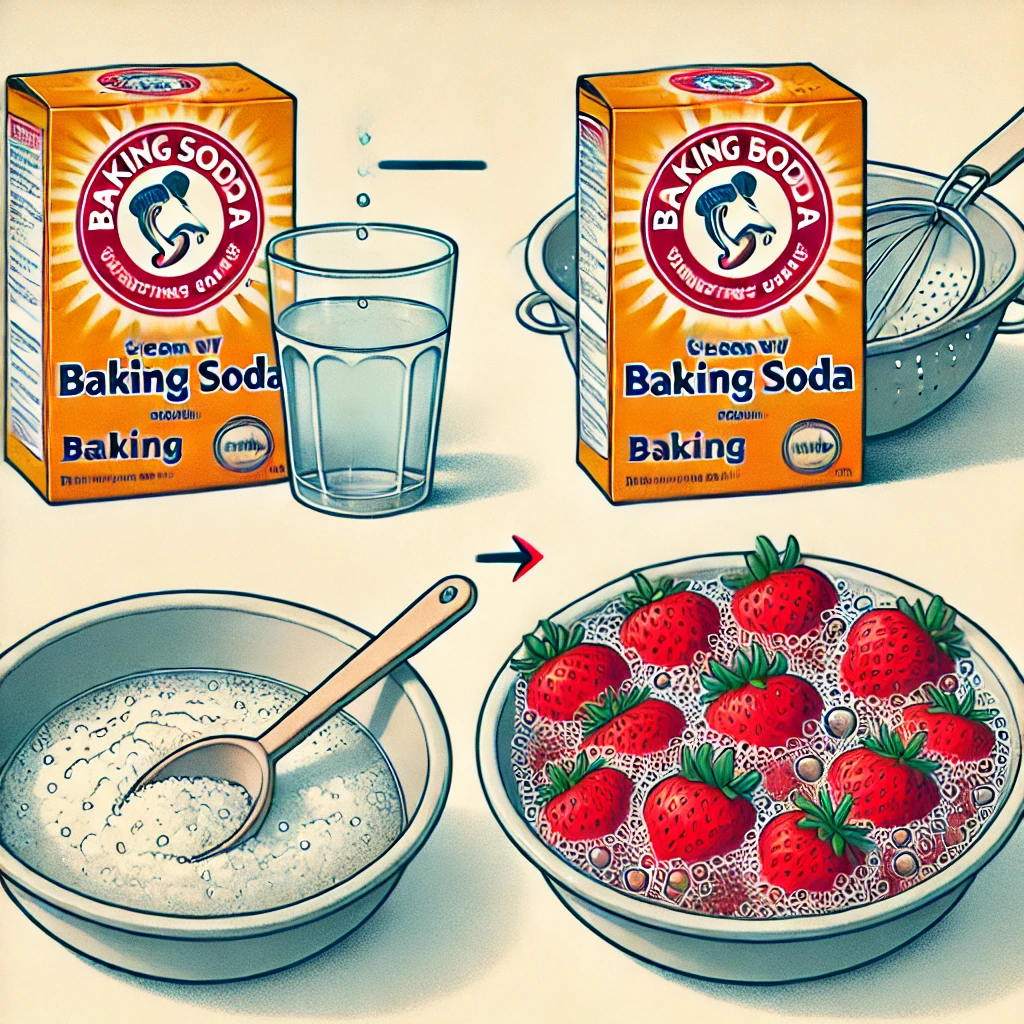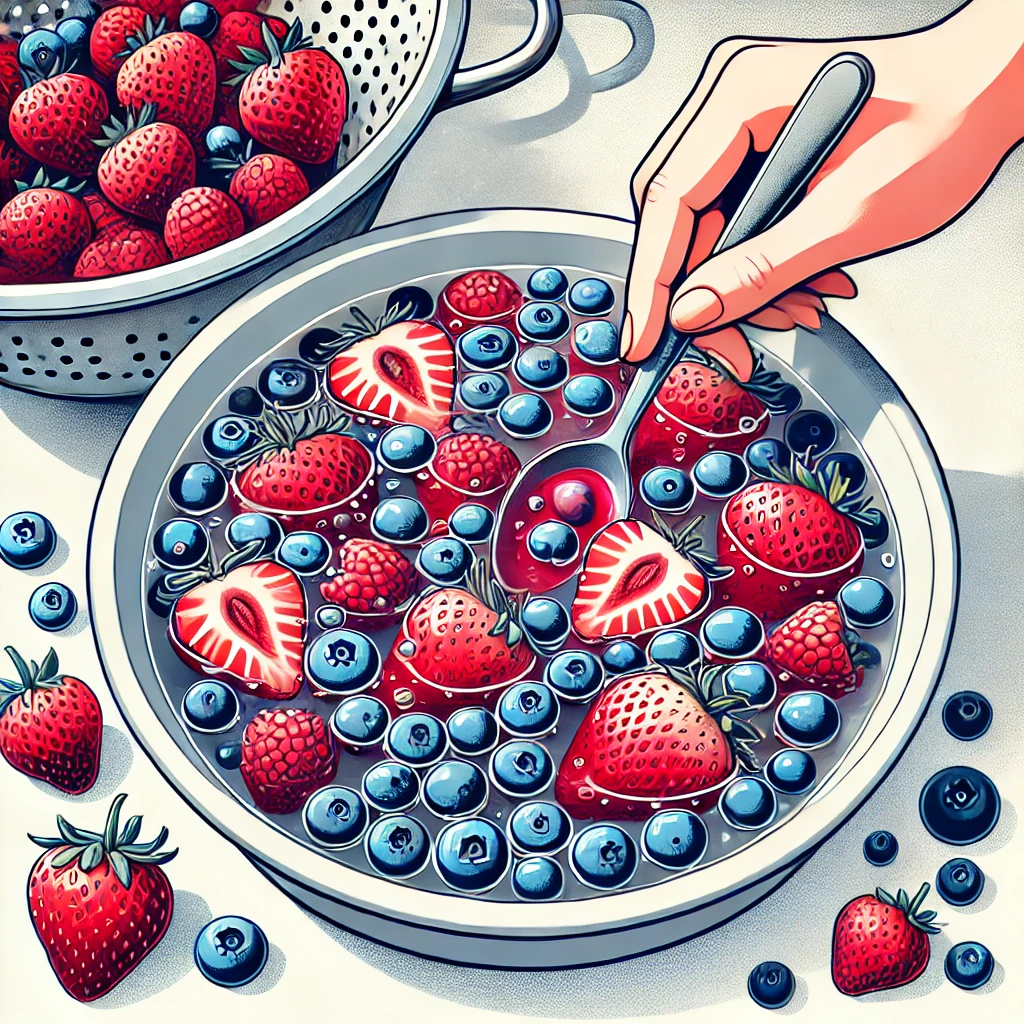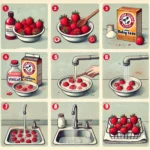Strawberries are a delicious and nutritious fruit, loved for their sweet flavor and versatility in various dishes. However, like many fruits, strawberries can harbor dirt, pesticides, and even bugs. Properly cleaning strawberries before consuming them is crucial to ensuring you enjoy their full benefits without any unwanted contaminants. In this guide, we’ll explore various methods to clean strawberries effectively, helping you keep them fresh and safe to eat.
Why It’s Important to Clean Strawberries
Before diving into the cleaning methods, let’s understand why it’s essential to clean strawberries thoroughly. Strawberries are often exposed to various elements during their growth, harvesting, and transportation. These factors can lead to the presence of:
- Dirt and Debris: Strawberries grow close to the ground, making them susceptible to dirt and soil particles.
- Pesticides: Farmers may use pesticides to protect the fruit from pests and diseases, leaving residues on the skin.
- Bugs: Tiny bugs and insects can sometimes make their home in the crevices of strawberries.
Consuming unwashed strawberries can pose health risks, such as exposure to harmful bacteria and chemicals. Proper cleaning not only enhances their taste but also ensures they are safe for consumption.
Methods for Cleaning Strawberries
How to Clean Strawberries with Vinegar

One of the most effective methods to clean strawberries is using a vinegar solution. Vinegar is known for its antibacterial properties and can help remove pesticide residues and kill bacteria.
Step-by-Step Guide:
- Prepare the Solution: Mix one part white vinegar with three parts water in a large bowl.
- Soak the Strawberries: Submerge the strawberries in the vinegar solution and let them soak for about 5 minutes.
- Rinse Thoroughly: Drain the strawberries and rinse them under cold running water to remove the vinegar taste.
- Dry the Strawberries: Pat the strawberries dry with a paper towel or let them air dry on a clean cloth.
Benefits: Using vinegar helps in effectively removing bacteria and reducing pesticide residues, making strawberries safer to eat.
How to Clean Strawberries with Baking Soda

Baking soda is another excellent option for cleaning strawberries. It is a natural cleaner that helps break down residues and eliminate dirt.
Step-by-Step Guide:
- Prepare the Solution: Dissolve one teaspoon of baking soda in a bowl of water.
- Soak the Strawberries: Place the strawberries in the baking soda solution and let them soak for about 5 minutes.
- Rinse Thoroughly: Rinse the strawberries under cold running water to ensure all baking soda is removed.
- Dry the Strawberries: Use a paper towel to gently dry the strawberries.
Benefits: Baking soda is a natural and effective way to clean strawberries, breaking down residues and ensuring they are free from contaminants.
How to Clean Strawberries with Salt

Salt can be particularly effective in removing bugs from strawberries. This method is simple and can help you ensure your strawberries are bug-free.
Step-by-Step Guide:
- Prepare the Solution: Dissolve two teaspoons of salt in a bowl of water.
- Soak the Strawberries: Place the strawberries in the saltwater solution and let them soak for about 5 minutes. You may notice tiny bugs floating to the surface.
- Rinse Thoroughly: Rinse the strawberries under cold running water to remove any remaining salt and bugs.
- Dry the Strawberries: Pat the strawberries dry with a paper towel or let them air dry.
Benefits: The saltwater solution helps draw out bugs and impurities, ensuring your strawberries are clean and safe to eat.
How to Clean Strawberries Before Eating

For a quick clean before eating, follow these simple steps:
- Rinse Under Running Water: Hold the strawberries under cold running water, gently rubbing them with your fingers to remove dirt.
- Inspect for Bugs: Check each strawberry for any visible bugs and remove them.
- Dry the Strawberries: Pat the strawberries dry with a paper towel.
Benefits: This method is quick and convenient, ideal for when you’re in a hurry and need a quick rinse before consuming strawberries.
Cleaning Strawberries and Blueberries Together

If you’re planning to enjoy strawberries and blueberries together, you can clean them simultaneously using a similar approach.
Step-by-Step Guide:
- Prepare a Solution: Use either a vinegar or baking soda solution as described earlier.
- Soak the Fruits: Place both strawberries and blueberries in the solution and let them soak for about 5 minutes.
- Rinse Thoroughly: Rinse both fruits under cold running water to remove any residues.
- Dry the Fruits: Use a paper towel to gently dry the strawberries and blueberries.
Benefits: Cleaning strawberries and blueberries together saves time and ensures both fruits are free from contaminants.
Commercial Produce Washes
For those who prefer ready-made solutions, several commercial produce washes are available in stores. These products are designed to remove pesticides and bacteria from fruits and vegetables.
Pros:
- Convenient and easy to use.
- Formulated to clean a variety of produce effectively.
Cons:
- May contain chemicals that some consumers wish to avoid.
- Can be more expensive than homemade solutions.
How to Make Strawberries Last Longer
Once you’ve cleaned your strawberries, proper storage is essential to maintain their freshness and extend their shelf life.
Drying Strawberries
After washing, it’s crucial to dry strawberries thoroughly to prevent mold growth. Use a clean paper towel to pat them dry or let them air dry on a kitchen towel.
Proper Storage
- Refrigeration: Store cleaned strawberries in the refrigerator. Place them in a breathable container lined with paper towels to absorb excess moisture.
- Avoid Crowding: Do not overcrowd the strawberries, as this can cause bruising and faster spoilage.
- Check Regularly: Regularly inspect the strawberries for signs of spoilage and remove any that are going bad to prevent them from affecting the others.
Common Mistakes to Avoid
- Soaking Too Long: Avoid soaking strawberries for too long, as this can make them waterlogged and reduce their flavor.
- Using Hot Water: Always use cold water when cleaning strawberries to prevent them from becoming mushy.
- Skipping the Rinse: After using vinegar or salt, always rinse thoroughly to remove any residual taste.
Frequently Asked Questions
Can I clean strawberries with lemon juice?
Yes, lemon juice can be used similarly to vinegar for cleaning strawberries. It has natural antibacterial properties and can enhance the flavor of strawberries.
How often should I clean strawberries?
Strawberries should be cleaned every time before eating, especially if you plan to store them for a few days.
Is it safe to eat unwashed strawberries?
While it’s not recommended, eating unwashed strawberries occasionally might not pose significant risks. However, regular consumption of unwashed strawberries can expose you to harmful bacteria and chemicals.
Conclusion
Cleaning strawberries properly is an essential step to ensure they are safe and enjoyable to eat. By using methods like vinegar, baking soda, or salt, you can effectively remove dirt, bugs, and pesticide residues. Proper storage after cleaning will help keep your strawberries fresh for longer, allowing you to savor their sweet taste without worry.




